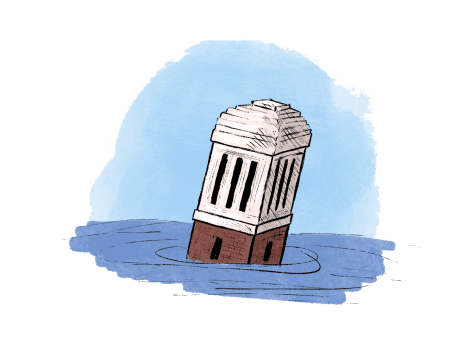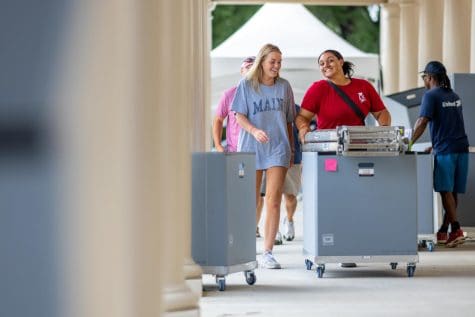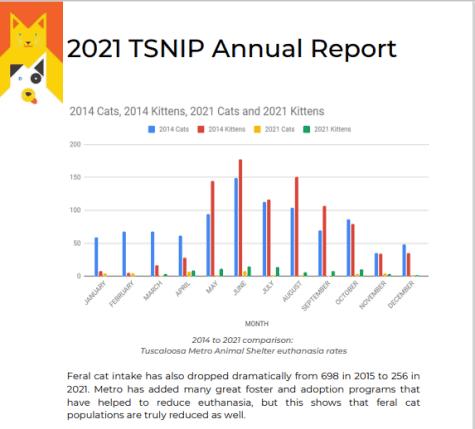Higher Education Partnerships Drive Local Growth
August 17, 2022
Each year, students from across the state gather in Montgomery to participate in Higher Education Day. The advocacy event is hosted by the Higher Education Partnership to bring funding and attention to Alabama’s colleges and universities.
These pushes are especially beneficial as state financial support for Alabama’s institutions sits below the national average.
“Alabama has a lot of low-income people, but our tuition revenue is twice the national average,” said Alabama Commission on Higher Education Executive Director Jim Purcell. These factors hinder accessible higher education, contributing to Alabama ranking 39th among all states in higher education outcomes.
Even as pushes for increased funding occur and lawmakers signal hope, Alabama has remained under the national average for per-student education appropriations for all but two years since 1980.
While institutions lobby for state funding, state officials should bear in mind the collaborative economic strength of colleges and universities in their local communities. West Alabama signals that increased cooperation between higher education, government agencies and other organizations creates greater outcomes for everyone involved.
Each higher education institution holds special qualities that bolster economic and community development. West Alabama wields a trio of higher education institutions whose varying specialties prepare students to broadly impact the local community. The economics of colleges and universities fall within their local communities, making cooperation a powerful tool.
Research universities like The University of Alabama are major innovators that fuel entrepreneurship and development within the local community. A study by the Federal Reserve Bank of New York found research universities to be a major contributor in creating an innovation-based economy.
Local engagement generates better outcomes for all parties. Universities across the nation have taken strides to strengthen entrepreneurship among faculty by transferring intellectual property rights to private firms, using incubators to commercialize innovation and strengthening entrepreneurship across curriculum.
Maintaining and expanding partnerships connects students to tangible career options while developing faculty research and local services. For over 140 years, the University has been so intertwined with the Geological Survey of Alabama that they hold “one coordinate history.”
Placing an emphasis on research-driven economic development reaps tangible benefits for the state and its institutions. The Georgia Research Alliance is a public-private partnership with eight state institutions that expands exploration and entrepreneurship by funding leading researchers, upgrading lab infrastructure, and helping to launch and grow companies.
They provide a model for Alabama to follow. In a report covering their first two decades, the Georgia Research Alliance recruited over 60 researchers, generating some $2.6 billion in investment, launching 175 companies, and creating 5,500 high-wage jobs across Georgia.
Broader programs like these drive local connections that deeply impact community development. Beyond necessary funding increases, government officials should recognize the impact that universities make to the local economy not as a singular factor, but as something that can be bolstered through cooperation and funding.
While research institutions create knowledge that drives innovation, growing local organizations helps translate those developments to the marketplace. Liberal arts institutions like Stillman College and the University of Alabama equip graduates with the soft skills that generate effective leaders who can adapt to new technologies.
Increasing collaboration with local agencies and organizations bolsters outcomes for everyone involved. The Edge is a business incubator and accelerator that exists from collaboration between the University of Alabama, the Chamber of Commerce of West Alabama, and the City of Tuscaloosa.
Combining their efforts, The Edge has brought multiple industries to Tuscaloosa including Camgian Microsystems Corporation. Jim Page, the president and CEO of the Chamber of Commerce of West Alabama expects their efforts to “alter Tuscaloosa’s economic trajectory.”
When government officials fail to provide adequate higher education funding, they ignore the potential impact that colleges and universities can have on their local community.
Comprehensive universities and community colleges like Shelton State Community College specifically equip students with direct jobs skills or training that allows students to effectively contribute to the local community.
Stillman College partners with Verizon to provide STEM training to under-resourced middle schools. The Chamber of Commerce of West Alabama and Shelton State partner to expand workforce development through direct job training programs.
Keeping a closer eye on collaboration with comprehensive universities and community colleges provides the most room for growth because they train the majority of local skilled workers, boosting competitiveness in the region.
As Alabama continues to underfund higher education support, state officials cannot ignore the local impact that colleges and universities possess. These programs can be fostered to develop academic powerhouses and alter social landscapes.
In one of the most comprehensive studies of higher education as economic drivers, the Rockefeller Institute of Government issued a report detailing the necessity of recognizing the potential power of colleges and universities in local communities.
“From Springfield, Massachusetts, where a technical college has converted an abandoned factory into an urban tech park, to Raleigh-Durham, North Carolina, where research universities worked to turn a sleepy backwater into a global powerhouse of innovation and manufacturing, to Sidney, Nebraska, where a community college operates a training academy that has helped keep the headquarters of a growing national company in its rural hometown, communities today recognize that their hopes for the future are tied to higher education,” the report read.
Such collaboration is strategic for everyone involved. Increasing communication with public agencies establishes more direct lines to request and explain funding requests. When Alabama officials undercut higher education support, they ignore the potential for community growth, better opportunities and economic competitiveness.











